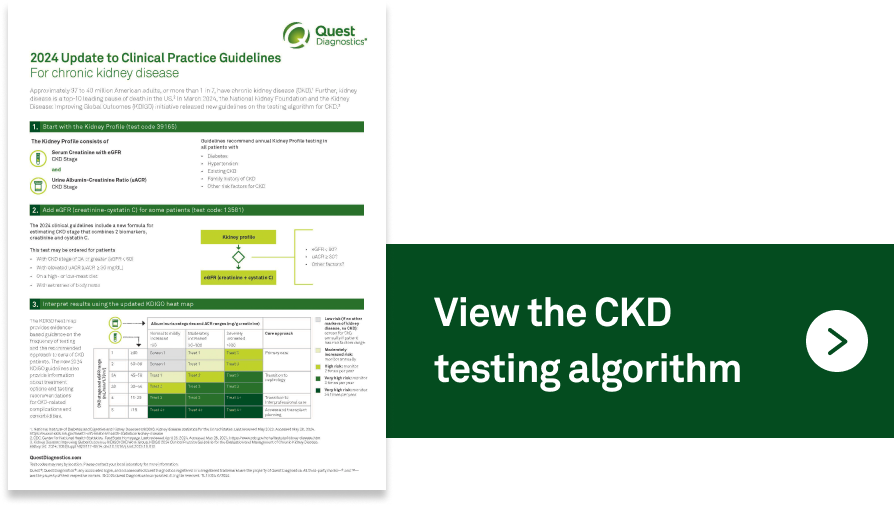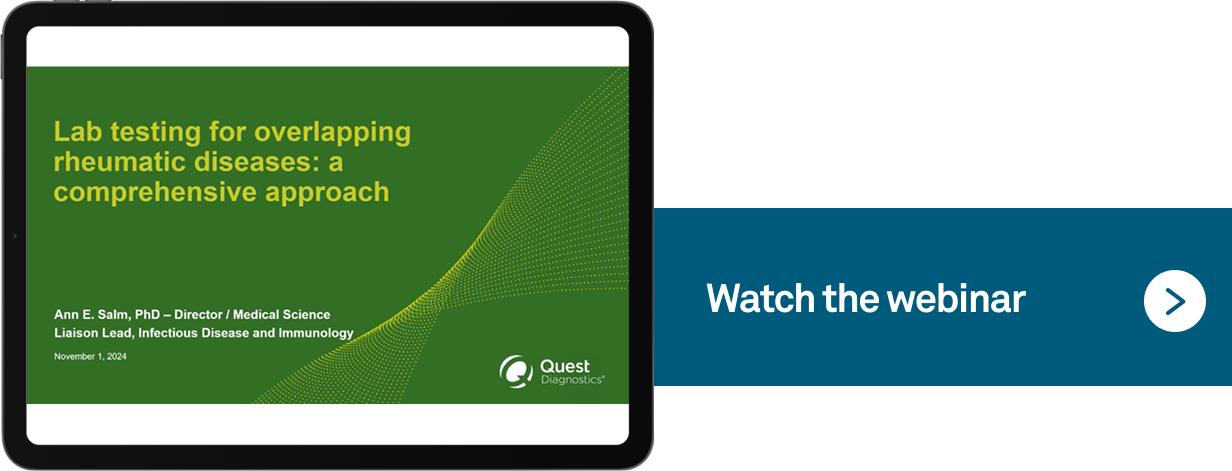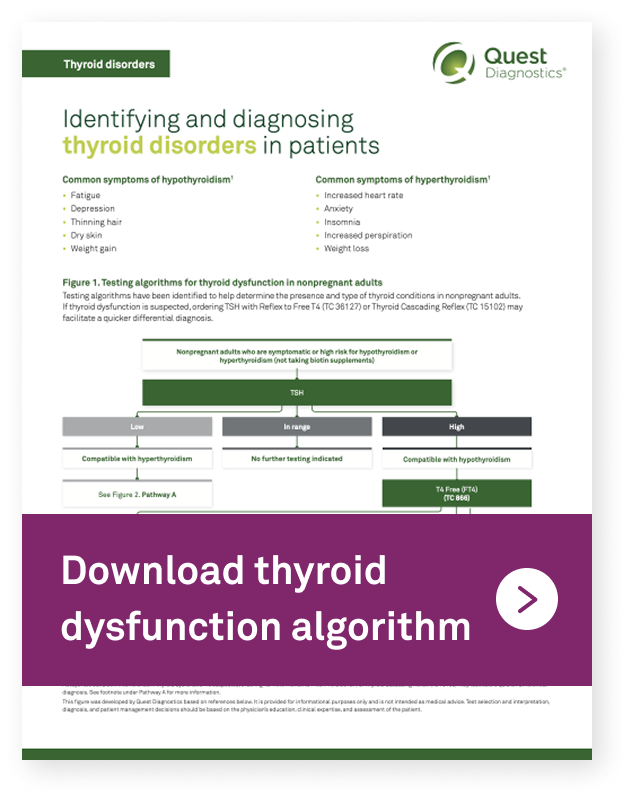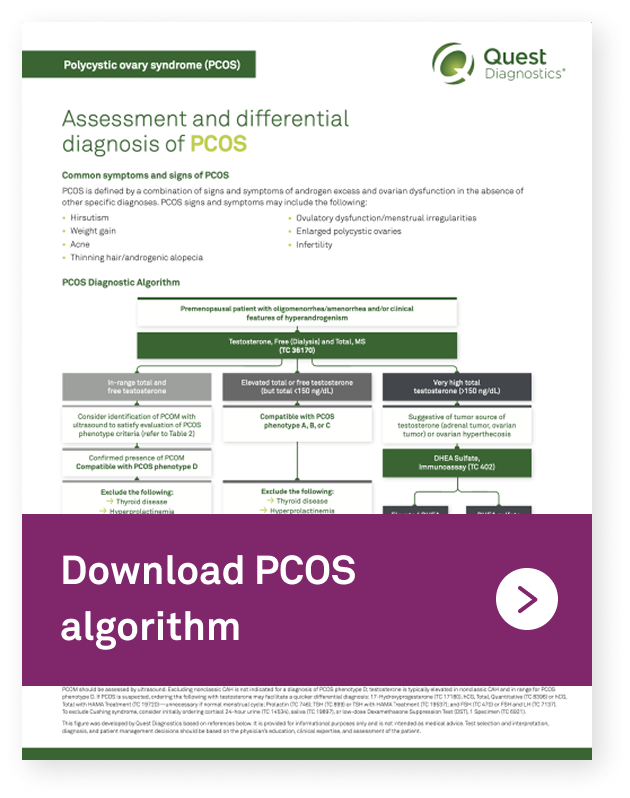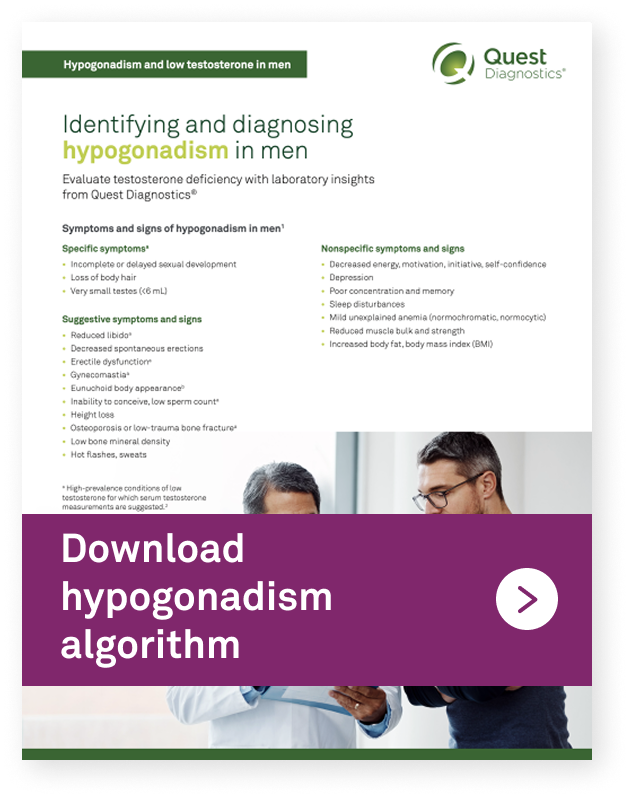March 2025

Discoveries, trends, and discussions in medical diagnostics
1) March is National Kidney Month
2) Identify risk of interrelated cardiometabolic diseases with 1 test code
3) Cancer care starts in primary care
4) Recognize the early signs of multiple myeloma
5) Watch the webinar: Expediting diagnoses of autoimmune diseases
6) Improve the diagnosis rate for endocrine conditions in primary care
|
|
March is National Kidney Month |
|
|
March is National Kidney Month |
|
|
March is National Kidney Month |
March is National Kidney Month |
Kidney disease affects millions of people
March serves as a rallying point to intensify efforts to raise awareness about chronic kidney disease (CKD).
- CKD affects more than 1 in 7 US adults—an estimated 35.5 million Americans1
- As many as 9 in 10 adults who have CKD are not aware they have the disease1
Identifying and managing patients who have early stages of CKD may slow or prevent the progression to end-stage kidney disease and reduce cardiovascular complications.2
Updated guidelines offer a more comprehensive approach to detecting and managing CKD at earlier stages—recommending both the traditional serum creatinine (eGFR) blood test and the urine albumin-to-creatinine ratio (uACR) test to assess both kidney function and damage.3
Guideline-based CKD testing can enable earlier diagnosis
Quest Diagnostics offers complete testing solutions and expert guidance to help diagnose CKD, manage progression, establish follow-ups, and initiate nephrology referrals.
With these combined insights, you can get a complete picture of your patient’s kidney health.

|
Better outcomes |
Better outcomes |
Identify risk of interrelated cardiometabolic diseases with 1 test code
The Metabolic Risk Panel from Quest can help simplify cardiometabolic risk assessment and provide a clear path for earlier risk identification. |
|
Cancer care starts in primary care
Recognize the early signs of multiple myeloma

|
Better experiences |
Better experiences |
Watch the webinar: Expediting diagnoses of autoimmune diseases

|
Removing traditional barriers to testing |

|
Removing traditional barriers to testing |
Removing traditional barriers to testing |
Improve the diagnosis rate for endocrine conditions in primary care
Achieving the Quadruple Aim in your practice
About Diagnostics Dialogue
- National Institute of Diabetes and Digestive and Kidney Diseases (NIDDK). Kidney disease statistics for the United States. Reviewed May 2023. Accessed May 28, 2024. https://www.niddk.nih.gov/health-information/health-statistics/kidney-disease
- Obrador G, Tonelli M. Early detection of chronic kidney disease. February 9, 2024. Accessed February 2, 2024. https://www.uptodate.com/contents/early-detection-of-chronic-kidney-disease
- Kidney disease: Improving global outcomes (KDIGO) CKD work group. KDIGO 2024 clinical practice guideline for the evaluation and management of chronic kidney disease. Kidney Int. 2024;105 (Suppl 4S): S117-S314. doi:10.1016/j.kint.2023.10.1018
- Singh A, Bruemmer D. Cardiometabolic risk: Shifting the paradigm toward comprehensive assessment. JACC Adv. 2024:3(4):100867. doi:10.1016/j.jacadv.2024.100867
- CDC. A report card: Diabetes in the United States infographic. Updated May 15, 2024. Accessed December 9, 2024. https://www.cdc.gov/diabetes/communication-resources/diabetes-statistics.html
- Liang X, Or B, Tsoi MF, et al. Prevalence of metabolic syndrome in the United States National Health and Nutrition Examination Survey 2011-18. Postgrad Med J. 2023;99(1175):985-992. doi:0.1093/postmj/qgad008
- Raghupathi W, Raghupathi V. An empirical study of chronic diseases in the United States: a visual analytics approach. Int J Environ Res Public Health. 2018;15(3):431. doi:10.3390/ijerph15030431
- Mikhael J, Bhutani M, Cole C, et al. Multiple myeloma for the primary care provider: A practical review to promote earlier diagnosis among diverse populations. Am J Med. 2023;136(1):33-41. doi:10.1016/j.amjmed.2022.08.030
- Katzmann JA, Kyle RA, Benson J, et al. Screening panels for detection of monoclonal gammopathies. Clin Chem. 2009;55(8):1517-1522. doi:10.1373/clinchem.2009.12666È
- Rajkumar SV, Dimopoulos MA, Palumbo A, et al. International myeloma working group updated criteria for the diagnosis of multiple myeloma. Lancet Oncol. 2014;15(12):e538-e548. doi:10.1016/S1470-2045(14)70442-5
- Autoimmune Association. Autoimmune disease list. Accessed February 3, 2024. https://autoimmune.org/disease-information/
- Autoimmune Association. Tips for getting a diagnosis of an autoimmune disease. Accessed May 2, 2024. https://autoimmune.org/resource-center/diagnosis-tips
- Vigersky RA, Fish L, Hogan P, et al. The clinical endocrinology workforce: current status and future projections of supply and demand. J Clin Endocrinol Metab. 2014;99(9):3112-3121. doi:10.1210/jc.2014-2257
- AACE Learning Center. Accessed August 3, 2023. https://learn.aace.com/Listing/SCOPE-Endocrinology-for-Primary-Care-5815
- American Thyroid Association. General information/press room. Accessed May 18, 2023. https://www.thyroid.org/media-main/press-room/
- Joham AE, Norman RJ, Stener-Victorin E, et al. Polycystic ovary syndrome. Lancet Diabetes Endocrinol. 2022;10(9):668-680. doi:10.1016/S2213-8587(22)00163-2
- Escobar-Morreale HF. Polycystic ovary syndrome: definition, aetiology, diagnosis and treatment. Nat Rev Endocrinol. 2018;14(5):270-284. doi:10.1038/nrendo.2018.24
- Azziz R. Polycystic ovary syndrome. Obstet Gynecol. 2018;132(2):321-336. doi:10.1097/AOG.0000000000002698
- Endocrine Society. Hypogonadism in men. January 24, 2022. Accessed February 8, 2024. https://www.endocrine.org/patient-engagement/endocrine-library/hypogonadism

